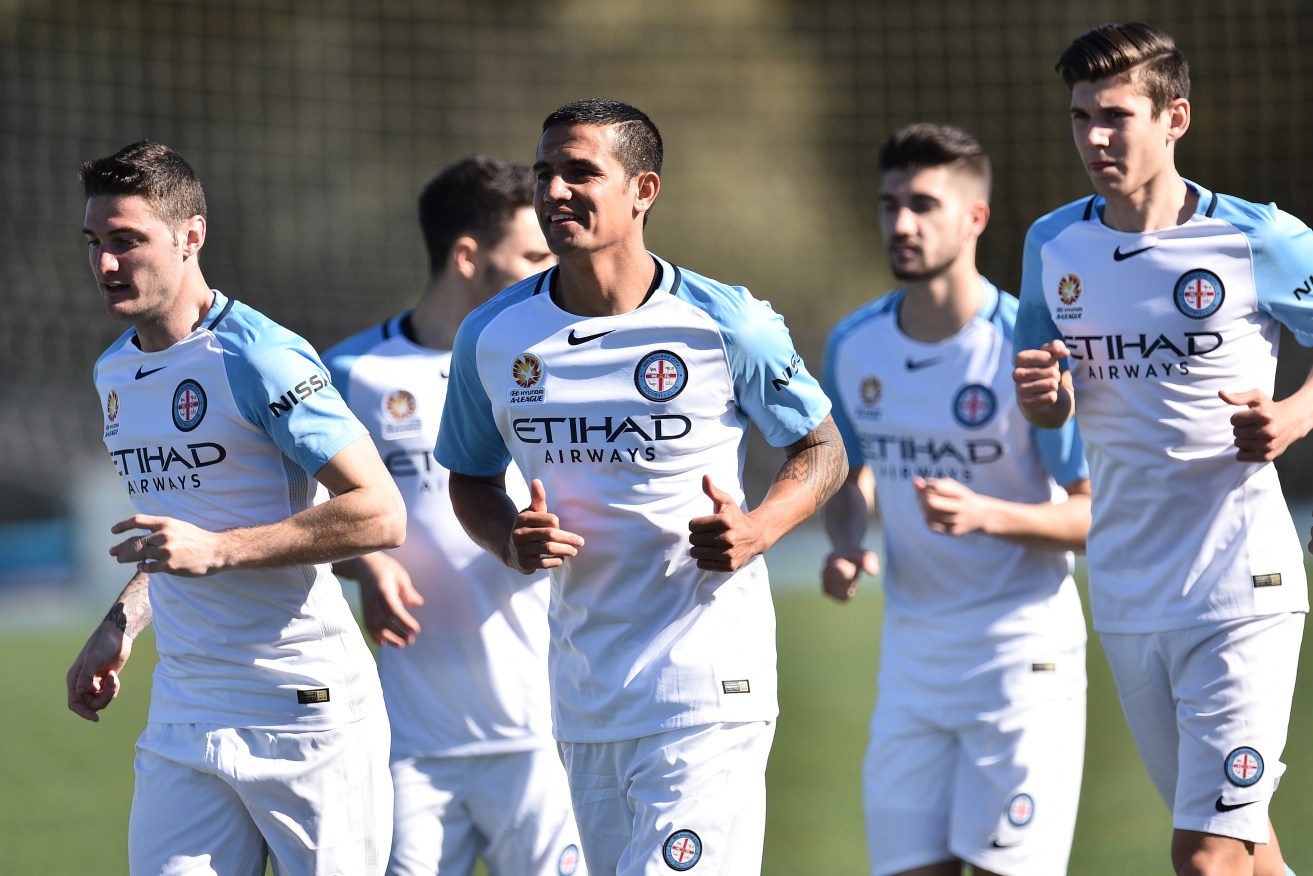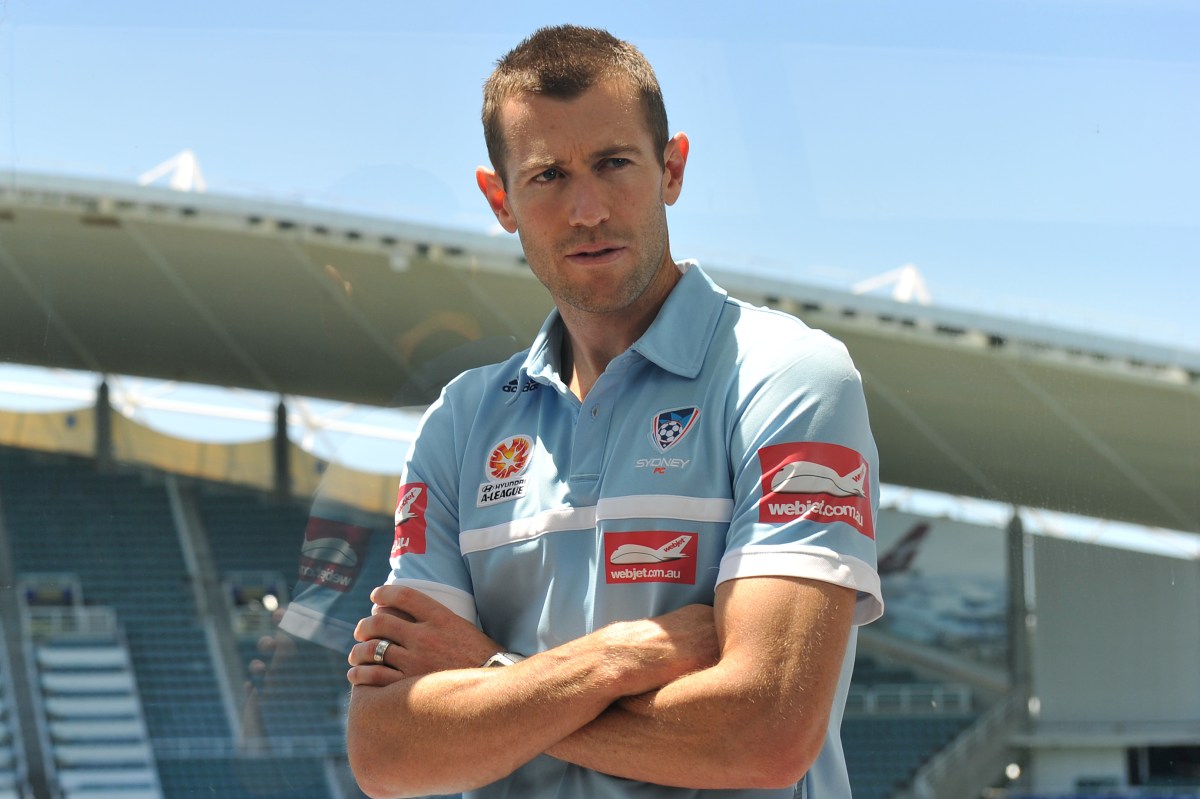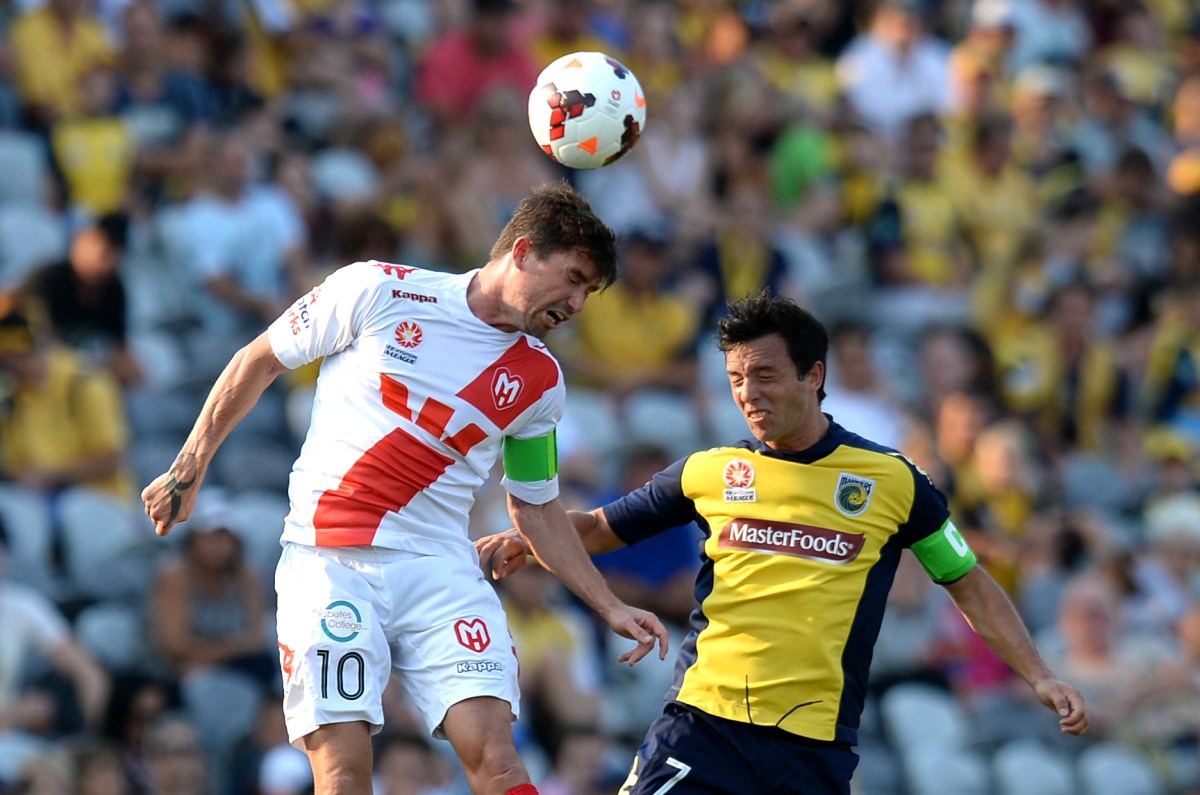Manton St Tales: Barrack hard, but show respect
It’s natural to barrack against marquee players when they wear the colours of the opposition. But, Paul Marcuccitti argues, we shouldn’t forget all they’ve done to put the sport on the map in Australia.

Tim Cahill’s Melbourne City will play Adelaide United at Hindmarsh on January 12. Photo: Julian Smith, AAP.
Adelaide United fans were mostly happy in the last few hours of 2012 as they’d just seen their team storm to a 3-0 home win over Sydney FC.
But there was some disappointment because one of the visiting club’s marquee signings, Alessandro Del Piero, missed the trip to SA. And at the time it wasn’t known whether he’d ever play at Hindmarsh.
I was also happy with the win but left the stadium a little disappointed as well. In my case it had more to do with the Sydney marquee that did play, not the one that didn’t.
Any list of Socceroos heroes of recent times is incomplete without Brett Emerton. And while he represented United’s opponents that evening, I still saw the guy who wore the green and gold with distinction, not a rival player.
It wouldn’t be his night. In an understrength Sydney side, Emerton strove to lift his team; however, little went his way, he showed some frustration, and got a few Bronx cheers.
And that’s fine – normal supporter behaviour.
But the two chaps I was stuck sitting in front of were truly imbecilic. They delighted in spending most of the game belittling Emerton. More than once, one loudly asked: “How many times did he play for the Socceroos again?”

Sydney FC and Socceroos midfielder Brett Emerton announcing his retirement in 2014 after a decorated career spanning 18 years. Photo: Paul Miller, AAP.
On another evening I might have turned around and said: “95 times. More than any other outfield player. Dickhead.” (Lucas Neill would eventually reach 96.) For whatever reason, I chose to hold my tongue. At some point, however, I subtly looked behind me – I wanted to know what ignoramuses look like – and, not surprisingly, I found that these two chaps would probably have struggled to jog the length of the pitch.
Thirteen months later Harry Kewell would play at Hindmarsh for the last time. We didn’t know he wouldn’t be back but he’d turned 35 so his playing career was clearly nearing its end. Some fans booed him (and him only) from the moment he got his first touch.
And I know what you might be thinking: it’s quite normal to cheer players when they’re in the national team and jeer them when they’re at rival clubs – that’s what happens in most countries.
But I wonder if we should be a bit more grateful. It was players like Kewell (voted Australia’s greatest ever footballer in 2012) and Emerton who gave us hope in the early 2000s when the sport really needed it. And then they took us to the promised land.
Kewell always had knockers. When he was a young star in the English Premier League, he was criticised for frequently missing Socceroos games. But he turned up when it mattered. And how. Australia scored a total of five goals in its six crunch World Cup qualifiers against Iran in 1997, Uruguay in 2001, and Uruguay again in 2005. Harry was involved in all of them.

Harry Kewell, here playing for the then-Melbourne Heart, was voted Australia’s greatest ever footballer. Photo: Dan Himbrechts, AAP.
Rather than lament his non-appearances, I was happy he played for Australia at all. With an English father, Kewell could have easily chosen to have three lions on his chest.
Similarly, Mark Viduka, the other household name before the 2006 World Cup provided several more, could have chosen Croatia. Take those players out and history would have been different.
Now three time World Cup star Tim Cahill returns. If fit, he will play for Melbourne City at Hindmarsh on 12 January.
But he’ll probably get his first taste of hostility on Australian soil in his first A-League match for Melbourne City as it’s likely to be a derby. Don’t expect Victory fans to care what he’s done for the Socceroos.
There’s nothing wrong with strong barracking for your team and against your opponents, however, it’s disappointing seeing extra venom directed at the players who have been crucial to the sport’s success. Even more sadly, as with most other things, when you go online you find keyboard warriors magnifying the vitriol.
I hope Cahill’s return works; that it boosts attendances, ratings and broader public interest. But I also hope that his status as a Socceroos favourite remains intact – as we’ve seen, domestic action in Australia might diminish that.
Whether we like it or not, these players are more use to us than we are to them. Yes, they’ve been able to earn a lot of money doing something they loved – and some of that came out of our pockets.
But those of us who enjoy the game and want it to succeed should recognise that our greatest Socceroos are also our greatest assets. They can promote the sport, inspire kids, perhaps coach, and provide expertise in many other areas. And they’ll do that in ways that administrators and scribes simply can’t.
Kewell is coaching young players in England and he doesn’t have to come back. His decision (and future decisions) may have nothing to do with the environment in Australia but if you want people like him around, making them feel underappreciated won’t help. If he stays overseas it will be our loss not his.
So by all means, barrack hard but without disrespect. It does us no good to diminish these Socceroos. And without them, what do we have to celebrate?
Paul Marcuccitti is a co-presenter of 5RTI’s Soccer on 531 program which can be heard from 10am on Saturdays.




